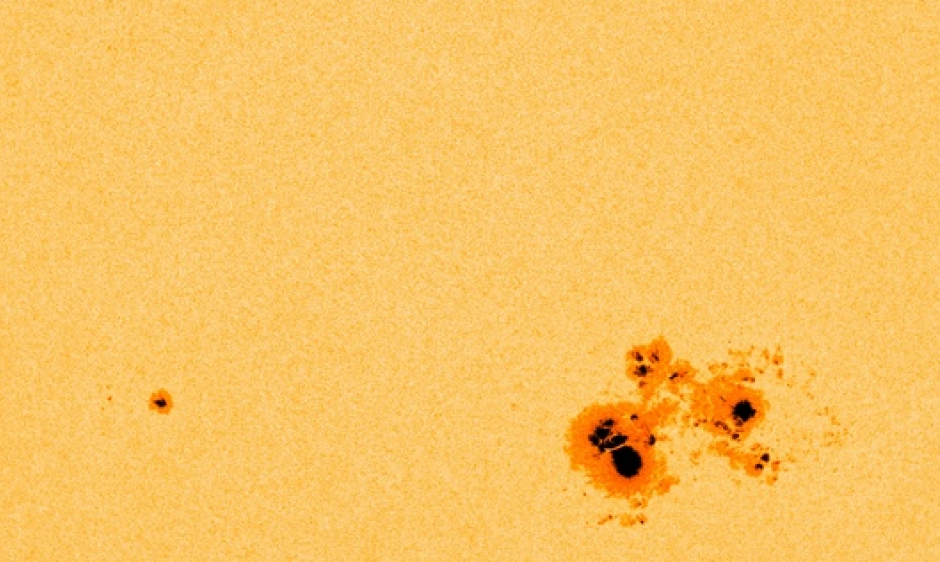
Active Region 12192 is the largest region since November 18, 1990, a full two solar cycles ago. To see what we might expect, we took a look back at the region from 1990 (Region 6368). At its largest, region 6368 was about 10% larger than region 12192. During its entire transit across the Earth facing side of the Sun, region 6368 did not produce any R3 or larger Radio Blackouts (X-class flares). Already, region 12192 has surpassed that region in term of production of significant solar flares. The full tally, keeping in mind that region 12192 has about 2 more days before rotating to the far side of the sun, is given in the table below.
| Region 6368 (1990) | Region 12192 (2014)* | |
|---|---|---|
| R3-R5 (X-class) flares | 0 | 6 |
| R1-R2 (M-class) flares | 14 | 23 |
| (C-class) flares | 96 | 62 |
*Through mid-day October 27.
Image courtesy of the NASA SDO HMI team.